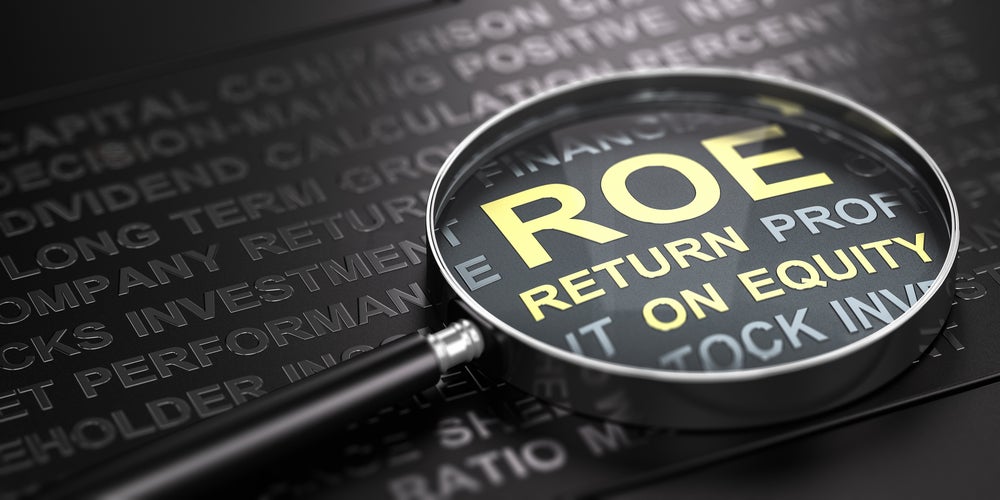Use Return On Equity To Find Stocks Delivering Profit For Every Dollar Invested Return on equity is a key measure of a stock's health that indicates how much profit a company generates for every dollar invested. Combined with rela...
By Kate Stalter
This story originally appeared on MarketBeat

What's a winning combination that measures a company's strength?
The answer is: High return on equity and low debt.
Let's start with return on equity, a key measure of a stock's health. It indicates how much profit a company generates for every dollar invested. To derive the return on equity, take a company's yearly net income and divide that by the total shareholder equity. Multiply that number by 100 to arrive at the ROE percentage.
Fortunately, you don't have to perform that calculation yourself. MarketBeat provides that ratio on its company profile pages. For example, here's a look at the profile for Apple (NASDAQ: AAPL). Scroll down to the "profitability" data on the right side. There, you'll see the ROE percentage.
ROE is a good measure of how efficiently company managers are putting capital to work. It also shows you how a company's profitability is tracking, relative to its growth. As a company's equity increases, it becomes more challenging to sustain a high ROE percentage.
Of course, earnings per share is another good, and very commonly used gauge of profitability, relative to ownership. ROE is simply another way to view profitability as it pertains to equity and offers a deeper glimpse into a company's strength.
Researchers found that an ROE of 17% or higher is a good place to begin adding stocks to a watch list. That's not the only criteria - increasing sales and earnings are also key screening components - but it's one you might consider adding to the mix.
There are a couple of caveats.
First, there's a connection between ROE and a company's profit margin. Sometimes, you'll see a company with strong annual pre-tax profit margins, yet its ROE is below 17%, or below that of industry rivals. In those cases, you might make an exception to the 17% rule. Those cases are fairly rare, however, and you want to be sure the pre-tax margin is above the average for the company's industry.
There is also a relationship between profit margins and return on equity. In some cases, you might allow for a below-peer ROE, if the company is churning out top-notch annual pretax margins. In general, annual pretax margin of 17% or higher is a sign of fundamental strength. You also want to see if a company's pretax margin is among the best in its industry.
The second caveat pertains to debt.
Many firms borrow money to finance new projects. As those products and services become profitable, ROE grows. However, you'll often see those companies post both high ROE and somewhat high levels of debt.
As you identify companies with high ROE, check their industry peers. What kind of ROE and debt levels do competitors have? If your company has a higher-than-average ROE as compared to its industry, and its debt is somewhat higher than average, those factors may be connected.
The industry comparison is necessary, as some industries are more capital-intensive than others. For example, airlines require far more capital to operate than software companies. A comparison of debt levels between companies in those disparate industries would essentially be meaningless.
But in general, a high debt-to-equity ratio is riskier for lenders and investors alike, as it increases the chances that a company may not be able to service its debt if it runs into difficult times.
On the flip side, it can raise red flags if a company fails to take advantage of leverage to finance growth. Institutional investors can ferret out companies that may not be realizing their full potential because they avoid borrowing to finance potentially profitable endeavors.
As you hone your stock-screening chops, you'll quickly learn that there's no single gauge that will deliver that perfect "aha" moment for discovering the next big thing.
But ROE is a strong metric to include in your research, as it can illuminate a company's use of capital relative to other firms in its industry. That can show you whether the stock you're considering has an advantage over competitors and has a better likelihood of delivering the return you're seeking.
Featured Article: What is the price-sales ratio?








